Fractional Vegetation Cover Derived from UAV and Sentinel-2 Imagery as a Proxy for In Situ FAPAR in a Dense Mixed-Coniferous Forest?
Abstract
:1. Introduction
- retrieve FCOVER from UAV flights for different phenological periods,
- evaluate the consistency between the S2 FAPAR and FCOVER products based on high-resolution ground observations and discuss the potential of remotely sensed FCOVER to approximate in situ FAPAR and its spatial variability.
2. Materials and Methods
2.1. Study Site
2.2. FAPAR Measurements
2.2.1. Experimental Design and Instrumentation
2.2.2. Processing of Two-Flux FAPAR Estimates
2.3. UAV Imagery
2.3.1. UAV and Camera System
2.3.2. Image Acquisition and Postprocessing
2.4. Sentinel-2 FAPAR and FCOVER
2.5. Spatial Linking of Products
2.5.1. Linking of Remote Sensing Products to In-Situ FAPAR
2.5.2. Linking Remote Sensing Products at Larger Extent
2.6. Statistical Analysis
3. Results
3.1. Remote Sensing Products
3.1.1. FCOVER-UAV
3.1.2. Sentinel-2 Products
3.1.3. Evaluation of FCOVER-S2 with FCOVER-UAV
3.2. Evaluation with In-Situ FAPAR
3.2.1. Absolute Values and Seasonal Dynamics
3.2.2. Spatial Variability
4. Discussion
4.1. Consistency of Remote Sensing Products
4.1.1. UAV-Derived FCOVER
4.1.2. Sentinel-2 Products
4.2. FCOVER as a Proxy for FAPAR
4.2.1. Influence of Spatial Resolution and Acquisition Conditions
4.2.2. Conceptual Differences between FAPAR and FCOVER
4.2.3. Optimizing FAPAR Sampling with UAV-Derived FCOVER
5. Conclusions and Recommendations
Author Contributions
Funding
Institutional Review Board Statement
Informed Consent Statement
Data Availability Statement
Acknowledgments
Conflicts of Interest
Appendix A
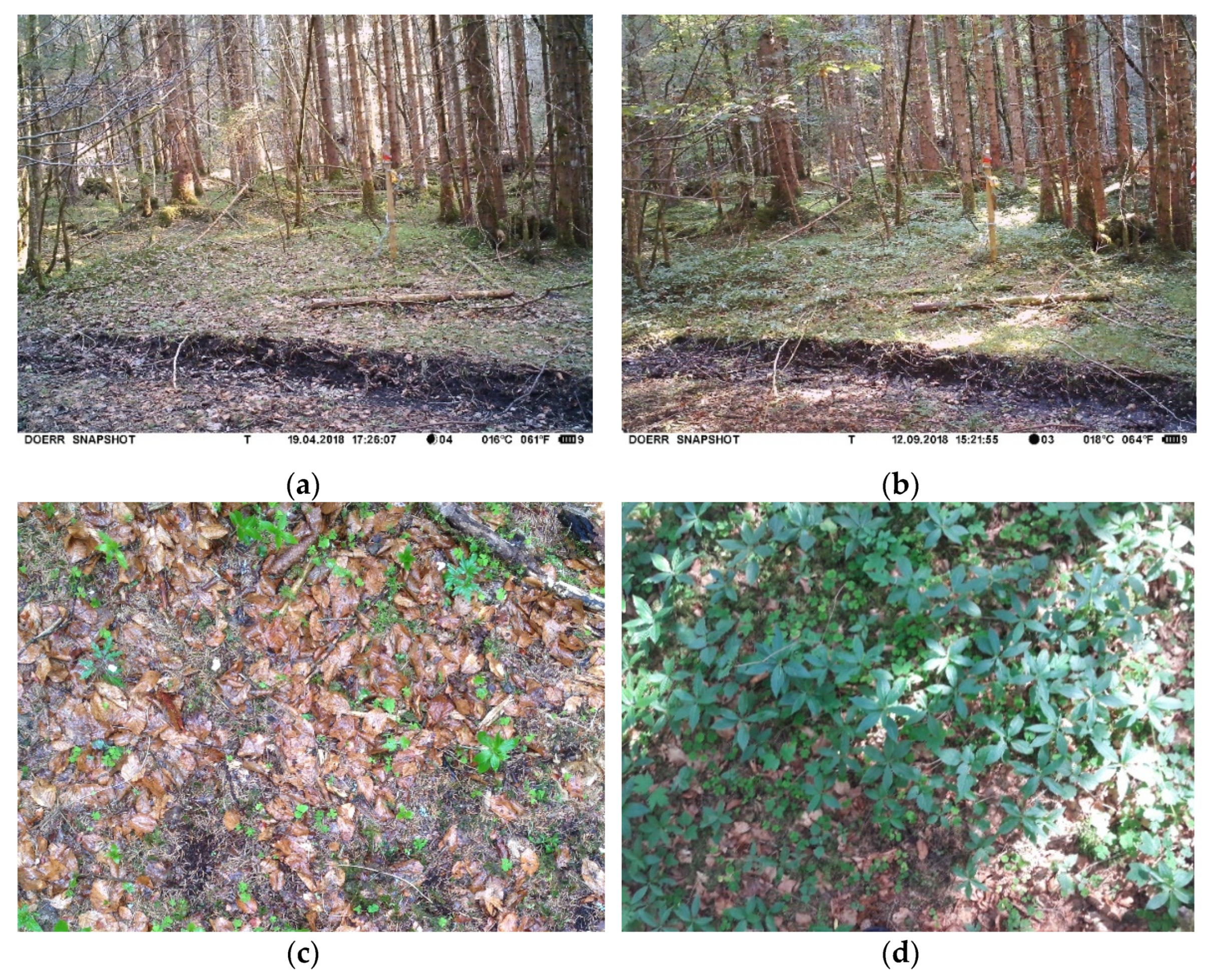
References
- Liang, S.; Wang, J. Fraction of absorbed photosynthetically active radiation. In Advanced Remote Sensing, 2nd ed.; Liang, S., Wang, J., Eds.; Academic Press: Cambridge, MA, USA, 2020; pp. 447–476. ISBN 978-0-12-815826-5. [Google Scholar]
- Mõttus, M.; Sulev, M.; Baret, F.; Lopez-Lozano, R.; Reinart, A. Photosynthetically Active Radiation: Measurement photosynthesis/photosynthetic(ally) active radiation (PAR) measurement and Modeling photosynthesis/photosynthetic(ally) active radiation (PAR) modeling. In Solar Energy; Richter, C., Lincot, D., Gueymard, C.A., Eds.; Springer: New York, NY, USA, 2013; pp. 140–169. ISBN 978-1-4614-5805-0. [Google Scholar]
- Gower, S.T.; Kucharik, C.J.; Norman, J.M. Direct and Indirect Estimation of Leaf Area Index, fAPAR, and Net Primary Production of Terrestrial Ecosystems. Remote Sens. Environ. 1999, 70, 29–51. [Google Scholar] [CrossRef]
- Ryu, Y.; Berry, J.A.; Baldocchi, D.D. What is global photosynthesis? History, uncertainties and opportunities. Remote Sens. Environ. 2019, 223, 95–114. [Google Scholar] [CrossRef]
- Global Climate Observing System. The Global Climate Observing System for Climate: Implementation Needs; GCOS-214; WMO: Geneva, Switzerland, 2016; Available online: https://library.wmo.int/doc_num.php?explnum_id=3417 (accessed on 11 January 2022).
- Global Climate Observing System. Systematic Observation Requirements for Satellite-Based Data Products for Climate; GCOS-154; WMO: Geneva, Switzerland, 2011; Available online: https://climate.esa.int/sites/default/files/gcos-154.pdf (accessed on 11 January 2022).
- Baret, F.; Hagolle, O.; Geiger, B.; Bicheron, P.; Miras, B.; Huc, M.; Berthelot, B.; Nino, F.; Weiss, M.; Samain, O.; et al. LAI, fAPAR and fCover CYCLOPES global products derived from VEGETATION Part 1: Principles of the algorithm. Remote Sens. Environ. 2007, 110, 275–286. [Google Scholar] [CrossRef] [Green Version]
- Carrer, D.; Roujean, J.-L.; Lafont, S.; Calvet, J.-C.; Boone, A.; Decharme, B.; Delire, C.; Gastellu-Etchegorry, J.-P. A canopy radiative transfer scheme with explicit FAPAR for the interactive vegetation model ISBA-A-gs: Impact on carbon fluxes. J. Geophys. Res. Biogeosci. 2013, 118, 888–903. [Google Scholar] [CrossRef] [Green Version]
- Gitelson, A.A. Remote estimation of fraction of radiation absorbed by photosynthetically active vegetation: Generic algorithm for maize and soybean. Remote Sens. Lett. 2019, 10, 283–291. [Google Scholar] [CrossRef]
- Liu, L.; Zhang, X.; Xie, S.; Liu, X.; Song, B.; Chen, S.; Peng, D. Global White-Sky and Black-Sky FAPAR Retrieval Using the Energy Balance Residual Method: Algorithm and Validation. Remote Sens. 2019, 11, 1004. [Google Scholar] [CrossRef] [Green Version]
- Knyazikhin, Y.; Martonchik, J.V.; Myneni, R.B.; Diner, D.J.; Running, S.W. Synergistic algorithm for estimating vegetation canopy leaf area index and fraction of absorbed photosynthetically active radiation from MODIS and MISR data. J. Geophys. Res. Atmos. 1998, 103, 32257–32275. [Google Scholar] [CrossRef] [Green Version]
- Chen, S.; Liu, L.; Zhang, X.; Liu, X.; Chen, X.; Qian, X.; Xu, Y.; Xie, D. Retrieval of the Fraction of Radiation Absorbed by Photosynthetic Components (FAPARgreen) for Forest using a Triple-Source Leaf-Wood-Soil Layer Approach. Remote Sens. 2019, 11, 2471. [Google Scholar] [CrossRef] [Green Version]
- Myneni, R.B.; Hoffman, S.; Knyazikhin, Y.; Privette, J.L.; Glassy, J.; Tian, Y.; Wang, Y.; Song, X.; Zhang, Y.; Smith, G.R.; et al. Global products of vegetation leaf area and fraction absorbed PAR from year one of MODIS data. Remote Sens. Environ. 2002, 83, 214–231. [Google Scholar] [CrossRef] [Green Version]
- Camacho, F.; Sanchez, J.; Lacaze, R.; Smets, B. Preliminary validation of Albedo, FAPAR and LAI Essential Climate Variables products derived from PROBA-V observations in the Copernicus Global Land Service. In EGU General Assembly Conference Abstracts; European Geoscience Union (EGU): Vienna, Austria, 2015. [Google Scholar]
- Baret, F.; Weiss, M.; Verger, A.; Smets, B. ATBD for LAI, FAPAR and FCOVER from PROBA-V products at 300m resolution (GEOV3); INRA: Avignon, France, 2016; Available online: https://land.copernicus.eu/global/sites/cgls.vito.be/files/products/ImagineS_RP2.1_ATBD-FAPAR300m_I1.73.pdf (accessed on 11 January 2022).
- Gobron, N. Ocean and Land Colour Instrument (OLCI) FAPAR and Rectified Channels over Terrestrial Surfaces: Algorithm Theoretical Basis Document. Available online: https://sentinel.esa.int/documents/247904/349589/OLCI_L2_ATBD_FAPAR.pdf (accessed on 11 January 2022).
- Weiss, M.; Baret, F.; Jay, S. S2ToolBox Level 2 Products: LAI, FAPAR, FCOVER: Version 2.0. Available online: http://step.esa.int/docs/extra/ATBD_S2ToolBox_V2.0.pdf (accessed on 11 January 2022).
- Li, W.; Baret, F.; Weiss, M.; Buis, S.; Lacaze, R.; Demarez, V.; Dejoux, J.; Battude, M.; Camacho, F. Combining hectometric and decametric satellite observations to provide near real time decametric FAPAR product. Remote Sens. Environ. 2017, 200, 250–262. [Google Scholar] [CrossRef]
- Wang, Y.; Xie, D.; Liu, S.; Hu, R.; Li, Y.; Yan, G. Scaling of FAPAR from the Field to the Satellite. Remote Sens. 2016, 8, 310. [Google Scholar] [CrossRef] [Green Version]
- Claverie, M.; Ju, J.; Masek, J.G.; Dungan, J.L.; Vermote, E.F.; Roger, J.-C.; Skakun, S.V.; Justice, C. The Harmonized Landsat and Sentinel-2 surface reflectance data set. Remote Sens. Environ. 2018, 219, 145–161. [Google Scholar] [CrossRef]
- Lee, L.; Friedl, M.A. Phenological variation in vegetation indices, leaf area index, and fraction of absorbed photosynthetically active radiation from Harmonized Landsat 8 and Sentinel-2 Data. In AGU Fall Meeting Abstracts 2020; B031-0009; American Geophysical Union (AGU): Malden MA, USA, 2020. [Google Scholar]
- Tao, X.; Liang, S.; Wang, D. Assessment of five global satellite products of fraction of absorbed photosynthetically active radiation: Intercomparison and direct validation against ground-based data. Remote Sens. Environ. 2015, 163, 270–285. [Google Scholar] [CrossRef]
- Bayat, B.; Camacho, F.; Nickeson, J.; Cosh, M.; Bolten, J.; Vereecken, H.; Montzka, C. Toward operational validation systems for global satellite-based terrestrial essential climate variables. Int. J. Appl. Earth Obs. Geoinf. 2021, 95, 102240. [Google Scholar] [CrossRef]
- D’Odorico, P.; Gonsamo, A.; Pinty, B.; Gobron, N.; Coops, N.; Mendez, E.; Schaepman, M.E. Intercomparison of fraction of absorbed photosynthetically active radiation products derived from satellite data over Europe. Remote Sens. Environ. 2014, 142, 141–154. [Google Scholar] [CrossRef]
- Pinty, B.; Jung, M.; Kaminski, T.; Lavergne, T.; Mund, M.; Plummer, S.; Thomas, E.; Widlowski, J.L. Evaluation of the JRC-TIP 0.01° products over a mid-latitude deciduous forest site. Remote Sens. Environ. 2011, 115, 3567–3581. [Google Scholar] [CrossRef]
- Xiao, Z.; Liang, S.; Sun, R. Evaluation of Three Long Time Series for Global Fraction of Absorbed Photosynthetically Active Radiation (FAPAR) Products. IEEE Trans. Geosci. Remote Sens. 2018, 56, 5509–5524. [Google Scholar] [CrossRef]
- Xu, B.; Park, T.; Yan, K.; Chen, C.; Zeng, Y.; Song, W.; Yin, G.; Li, J.; Liu, Q.; Knyazikhin, Y.; et al. Analysis of Global LAI/FPAR Products from VIIRS and MODIS Sensors for Spatio-Temporal Consistency and Uncertainty from 2012–2016. Forests 2018, 9, 73. [Google Scholar] [CrossRef] [Green Version]
- Putzenlechner, B.; Castro, S.; Kiese, R.; Ludwig, R.; Marzahn, P.; Sharp, I.; Sanchez-Azofeifa, A. Validation of Sentinel-2 fAPAR products using ground observations across three forest ecosystems. Remote Sens. Environ. 2019, 232, 111310. [Google Scholar] [CrossRef]
- Lausch, A.; Erasmi, S.; King, D.; Magdon, P.; Heurich, M. Understanding Forest Health with Remote Sensing-Part II—A Review of Approaches and Data Models. Remote Sens. 2017, 9, 129. [Google Scholar] [CrossRef] [Green Version]
- Mondal, P.; McDermid, S.S.; Qadir, A. A reporting framework for Sustainable Development Goal 15: Multi-scale monitoring of forest degradation using MODIS, Landsat and Sentinel data. Remote Sens. Environ. 2020, 237, 111592. [Google Scholar] [CrossRef]
- Gobron, N. Report on Satellite Derived ECV Definition and Field Protocols; European Commission (EC)/Joint Research Centre (JRC): Ispra, Italy, 2015; Available online: http://www.qa4ecv.eu/sites/default/files/QA4ECV_D3.3_final.pdf (accessed on 11 January 2022).
- Putzenlechner, B.; Marzahn, P.; Sanchez-Azofeifa, A. Accuracy assessment on the number of flux terms needed to estimate in situ fAPAR. Int. J. Appl. Earth Obs. Geoinf. 2020, 88, 102061. [Google Scholar] [CrossRef]
- Leuchner, M.; Hertel, C.; Menzel, A. Spatial variability of photosynthetically active radiation in European beech and Norway spruce. Agric. For. Meteorol. 2011, 151, 1226–1232. [Google Scholar] [CrossRef]
- Ollinger, S.V. Sources of variability in canopy reflectance and the convergent properties of plants. New Phytol. 2011, 189, 375–394. [Google Scholar] [CrossRef]
- Putzenlechner, B.; Marzahn, P.; Kiese, R.; Ludwig, R.; Sanchez-Azofeifa, A. Assessing the variability and uncertainty of two-flux FAPAR measurements in a conifer-dominated forest. Agric. For. Meteorol. 2019, 264, 149–163. [Google Scholar] [CrossRef]
- Widlowski, J.-L. On the bias of instantaneous FAPAR estimates in open-canopy forests. Agric. For. Meteorol. 2010, 150, 1501–1522. [Google Scholar] [CrossRef]
- Ganguly, S.; Nemani, R.R.; Baret, F.; Bi, J.; Weiss, M.; Zhang, G.; Milesi, C.; Hashimoto, H.; Samanta, A.; Verger, A.; et al. Green Leaf Area and Fraction of Photosynthetically Active Radiation Absorbed by Vegetation. In Biophysical Applications of Satellite Remote Sensing; Hanes, J.M., Ed.; Springer: Berlin/Heidelberg, Germany, 2014; pp. 43–61. ISBN 978-3-642-25047-7. [Google Scholar]
- Claverie, M.; Vermote, E.F.; Weiss, M.; Baret, F.; Hagolle, O.; Demarez, V. Validation of coarse spatial resolution LAI and FAPAR time series over cropland in southwest France. Remote Sens. Environ. 2013, 139, 216–230. [Google Scholar] [CrossRef]
- Djamai, N.; Fernandes, R.; Weiss, M.; McNairn, H.; Goïta, K. Validation of the Sentinel Simplified Level 2 Product Prototype Processor (SL2P) for mapping cropland biophysical variables using Sentinel-2/MSI and Landsat-8/OLI data. Remote Sens. Environ. 2019, 225, 416–430. [Google Scholar] [CrossRef]
- Nestola, E.; Sánchez-Zapero, J.; Latorre, C.; Mazzenga, F.; Matteucci, G.; Calfapietra, C.; Camacho, F. Validation of PROBA-V GEOV1 and MODIS C5 & C6 fAPAR Products in a Deciduous Beech Forest Site in Italy. Remote Sens. 2017, 9, 126. [Google Scholar]
- Fensholt, R.; Sandholt, I.; Rasmussen, M.S. Evaluation of MODIS LAI, fAPAR and the relation between fAPAR and NDVI in a semi-arid environment using in situ measurements. Remote Sens. Environ. 2004, 91, 490–507. [Google Scholar] [CrossRef]
- Liu, N.; Treitz, P. Remote sensing of Arctic percent vegetation cover and fAPAR on Baffin Island, Nunavut, Canada. Int. J. Appl. Earth Obs. Geoinf. 2018, 71, 159–169. [Google Scholar] [CrossRef]
- Pickett-Heaps, C.A.; Canadell, J.G.; Briggs, P.R.; Gobron, N.; Haverd, V.; Paget, M.J.; Pinty, B.; Raupach, M.R. Evaluation of six satellite-derived Fraction of Absorbed Photosynthetic Active Radiation (FAPAR) products across the Australian continent. Remote Sens. Environ. 2014, 140, 241–256. [Google Scholar] [CrossRef]
- Gonsamo, A.; D’odorico, P.; Pellikka, P. Measuring fractional forest canopy element cover and openness-definitions and methodologies revisited. Oikos 2013, 122, 1283–1291. [Google Scholar] [CrossRef] [Green Version]
- Gobron, N.; Pinty, B.; Taberner, M.; Mélin, F.; Verstraete, M.M.; Widlowski, J.L. Monitoring the photosynthetic activity of vegetation from remote sensing data. Adv. Space Res. 2006, 38, 2196–2202. [Google Scholar] [CrossRef]
- Liang, S.; Wang, J. Fractional vegetation cover. In Advanced Remote Sensing, 2nd ed.; Liang, S., Wang, J., Eds.; Academic Press: Cambridge, MA, USA, 2020; pp. 477–510. ISBN 978-0-12-815826-5. [Google Scholar]
- DiMiceli, C.; Carroll, M.; Sohlberg, R.; Kim, D.-H.; Kelly, M.; Townshend, J. MOD44B MODIS/Terra Vegetation Continuous Fields Yearly L3 Global 250m SIN Grid V006; NASA EOSDIS Land Processes DAAC. 2015. Available online: https://doi.org/10.5067/MODIS/MOD44B.006 (accessed on 11 January 2022).
- Hansen, M.C.; Potapov, P.V.; Moore, R.; Hancher, M.; Turubanova, S.A.; Tyukavina, A.; Thau, D.; Stehman, S.V.; Goetz, S.J.; Loveland, T.R.; et al. High-Resolution Global Maps of 21st-Century Forest Cover Change. Science 2013, 342, 850. [Google Scholar] [CrossRef] [Green Version]
- Iglhaut, J.; Cabo, C.; Puliti, S.; Piermattei, L.; O’Connor, J.; Rosette, J. Structure from Motion Photogrammetry in Forestry: A Review. Curr. For. Rep. 2019, 5, 155–168. [Google Scholar] [CrossRef] [Green Version]
- Yao, H.; Qin, R.; Chen, X. Unmanned Aerial Vehicle for Remote Sensing Applications—A Review. Remote Sens. 2019, 11, 1443. [Google Scholar] [CrossRef] [Green Version]
- Riihimäki, H.; Luoto, M.; Heiskanen, J. Estimating fractional cover of tundra vegetation at multiple scales using unmanned aerial systems and optical satellite data. Remote Sens. Environ. 2019, 224, 119–132. [Google Scholar] [CrossRef]
- Lima-Cueto, F.J.; Blanco-Sepúlveda, R.; Gómez-Moreno, M.L.; Galacho-Jiménez, F.B. Using Vegetation Indices and a UAV Imaging Platform to Quantify the Density of Vegetation Ground Cover in Olive Groves (Olea Europaea L.) in Southern Spain. Remote Sens. 2019, 11, 2564. [Google Scholar] [CrossRef] [Green Version]
- Chianucci, F.; Disperati, L.; Guzzi, D.; Bianchini, D.; Nardino, V.; Lastri, C.; Rindinella, A.; Corona, P. Estimation of canopy attributes in beech forests using true colour digital images from a small fixed-wing UAV. Int. J. Appl. Earth Obs. Geoinf. 2016, 47, 60–68. [Google Scholar] [CrossRef] [Green Version]
- Iizuka, K.; Kato, T.; Silsigia, S.; Soufiningrum, A.Y.; Kozan, O. Estimating and Examining the Sensitivity of Different Vegetation Indices to Fractions of Vegetation Cover at Different Scaling Grids for Early Stage Acacia Plantation Forests Using a Fixed-Wing UAS. Remote Sens. 2019, 11, 1816. [Google Scholar] [CrossRef] [Green Version]
- Yan, G.; Li, L.; Coy, A.; Mu, X.; Chen, S.; Xie, D.; Zhang, W.; Shen, Q.; Zhou, H. Improving the estimation of fractional vegetation cover from UAV RGB imagery by colour unmixing. ISPRS J. Photogramm. Remote Sens. 2019, 158, 23–34. [Google Scholar] [CrossRef]
- Getzin, S.; Nuske, R.; Wiegand, K. Using Unmanned Aerial Vehicles (UAV) to Quantify Spatial Gap Patterns in Forests. Remote Sens. 2014, 6, 6988–7004. [Google Scholar] [CrossRef] [Green Version]
- Khokthong, W.; Zemp, D.C.; Irawan, B.; Sundawati, L.; Kreft, H.; Hölscher, D. Drone-Based Assessment of Canopy Cover for Analyzing Tree Mortality in an Oil Palm Agroforest. Front. For. Glob. Chang. 2019, 2, 12. [Google Scholar] [CrossRef] [Green Version]
- Weiss, M.; Baret, F. CAN EYE V6.4.91 USER MANUAL; INRA: Avignon, France, 2017; Available online: https://www6.paca.inrae.fr/can-eye/content/download/3052/30819/version/4/file/CAN_EYE_User_Manual.pdf (accessed on 11 January 2022).
- Reifsnyder, W.E.; Furnival, G.M.; Horowitz, J.L. Spatial and temporal distribution of solar radiation beneath forest canopies. Agric. Meteorol. 1971, 9, 21–37. [Google Scholar] [CrossRef]
- Marcial-Pablo, M.D.J.; Gonzalez-Sanchez, A.; Jimenez-Jimenez, S.I.; Ontiveros-Capurata, R.E.; Ojeda-Bustamante, W. Estimation of vegetation fraction using RGB and multispectral images from UAV. Int. J. Remote Sens. 2019, 40, 420–438. [Google Scholar] [CrossRef]
- Hu, Q.; Yang, J.; Xu, B.; Huang, J.; Memon, M.S.; Yin, G.; Zeng, Y.; Zhao, J.; Liu, K. Evaluation of Global Decametric-Resolution LAI, FAPAR and FVC Estimates Derived from Sentinel-2 Imagery. Remote Sens. 2020, 12, 912. [Google Scholar] [CrossRef] [Green Version]
- Zacharias, S.; Bogena, H.; Samaniego, L.; Mauder, M.; Fuß, R.; Pütz, T.; Frenzel, M.; Schwank, M.; Baessler, C.; Butterbach-Bahl, K.; et al. A Network of Terrestrial Environmental Observatories in Germany. Vadose Zone J. 2011, 10, 955. [Google Scholar] [CrossRef] [Green Version]
- Mortazavi, S.H.; Salehe, M.; MacGregor, M.H. Maximum WSN coverage in environments of heterogeneous path loss. Int. J. Sens. Netw. 2014, 16, 185–198. [Google Scholar] [CrossRef]
- Younis, M.; Akkaya, K. Strategies and techniques for node placement in wireless sensor networks: A survey. Ad Hoc Netw. 2008, 6, 621–655. [Google Scholar] [CrossRef]
- Axelsson, P. DEM Generation from Laser Scanner Data Using Adaptive TIN Models. ISPRS-Int. Arch. Photogramm. Remote Sens. Spat. Inf. Sci. 2000, 33, 110–117. [Google Scholar]
- Drusch, M.; Del Bello, U.; Carlier, S.; Colin, O.; Fernandez, V.; Gascon, F.; Hoersch, B.; Isola, C.; Laberinti, P.; Martimort, P.; et al. Sentinel-2: ESA’s Optical High-Resolution Mission for GMES Operational Services. Remote Sens. Environ. 2012, 120, 25–36. [Google Scholar] [CrossRef]
- Mueller-Wilm, U.; Devignot, O.; Pessiot, L. S2 MPC-Sen2Cor Configuration and User Manual: Ref. S2-PDGS-MPC-L2A-SUM-V2.9; ESA. 2020. Available online: http://step.esa.int/thirdparties/sen2cor/2.9.0/docs/S2-PDGS-MPC-L2A-SUM-V2.9.0.pdf (accessed on 11 January 2022).
- Wallace, L.; Lucieer, A.; Malenovský, Z.; Turner, D.; Vopěnka, P. Assessment of Forest Structure Using Two UAV Techniques: A Comparison of Airborne Laser Scanning and Structure from Motion (SfM) Point Clouds. Forests 2016, 7, 62. [Google Scholar] [CrossRef] [Green Version]
- Brown, L.A.; Meier, C.; Morris, H.; Pastor-Guzman, J.; Bai, G.; Lerebourg, C.; Gobron, N.; Lanconelli, C.; Clerici, M.; Dash, J. Evaluation of global leaf area index and fraction of absorbed photosynthetically active radiation products over North America using Copernicus Ground Based Observations for Validation data. Remote Sens. Environ. 2020, 247, 111935. [Google Scholar] [CrossRef]
- Schneider, F.D.; Ferraz, A.; Hancock, S.; Duncanson, L.I.; Dubayah, R.O.; Pavlick, R.P.; Schimel, D.S. Towards mapping the diversity of canopy structure from space with GEDI. Environ. Res. Lett. 2020, 15, 115006. [Google Scholar] [CrossRef]
- Dark, S.J.; Bram, D. The modifiable areal unit problem (MAUP) in physical geography. Prog. Phys. Geogr. Earth Environ. 2007, 31, 471–479. [Google Scholar] [CrossRef] [Green Version]
- Hertel, C.; Leuchner, M.; Rötzer, T.; Menzel, A. Assessing stand structure of beech and spruce from measured spectral radiation properties and modeled leaf biomass parameters. Agric. For. Meteorol. 2012, 165, 82–91. [Google Scholar] [CrossRef]
- Pardos, M.; Del Río, M.; Pretzsch, H.; Jactel, H.; Bielak, K.; Bravo, F.; Brazaitis, G.; Defossez, E.; Engel, M.; Godvod, K.; et al. The greater resilience of mixed forests to drought mainly depends on their composition: Analysis along a climate gradient across Europe. For. Ecol. Manag. 2021, 481, 118687. [Google Scholar] [CrossRef]
- Kuuluvainen, T. Crown architecture and stemwood production in Norway spruce (Picea abies (L.) Karst.). Tree Physiol. 1988, 4, 337–346. [Google Scholar] [CrossRef]
- Seidel, D.; Schall, P.; Gille, M.; Ammer, C. Relationship between tree growth and physical dimensions of Fagus sylvatica crowns assessed from terrestrial laser scanning. iForest 2015, 8, 735–742. [Google Scholar] [CrossRef]
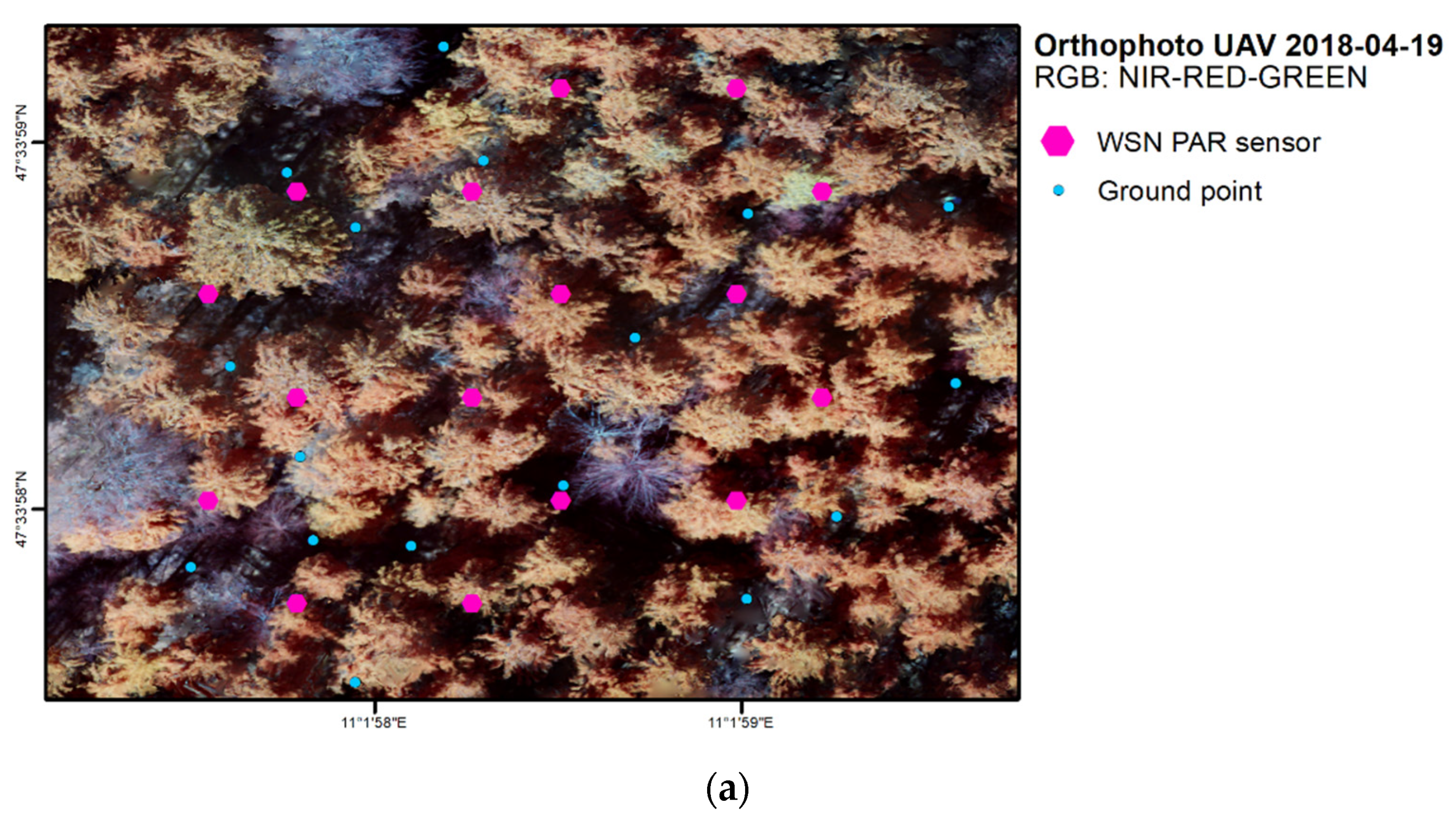
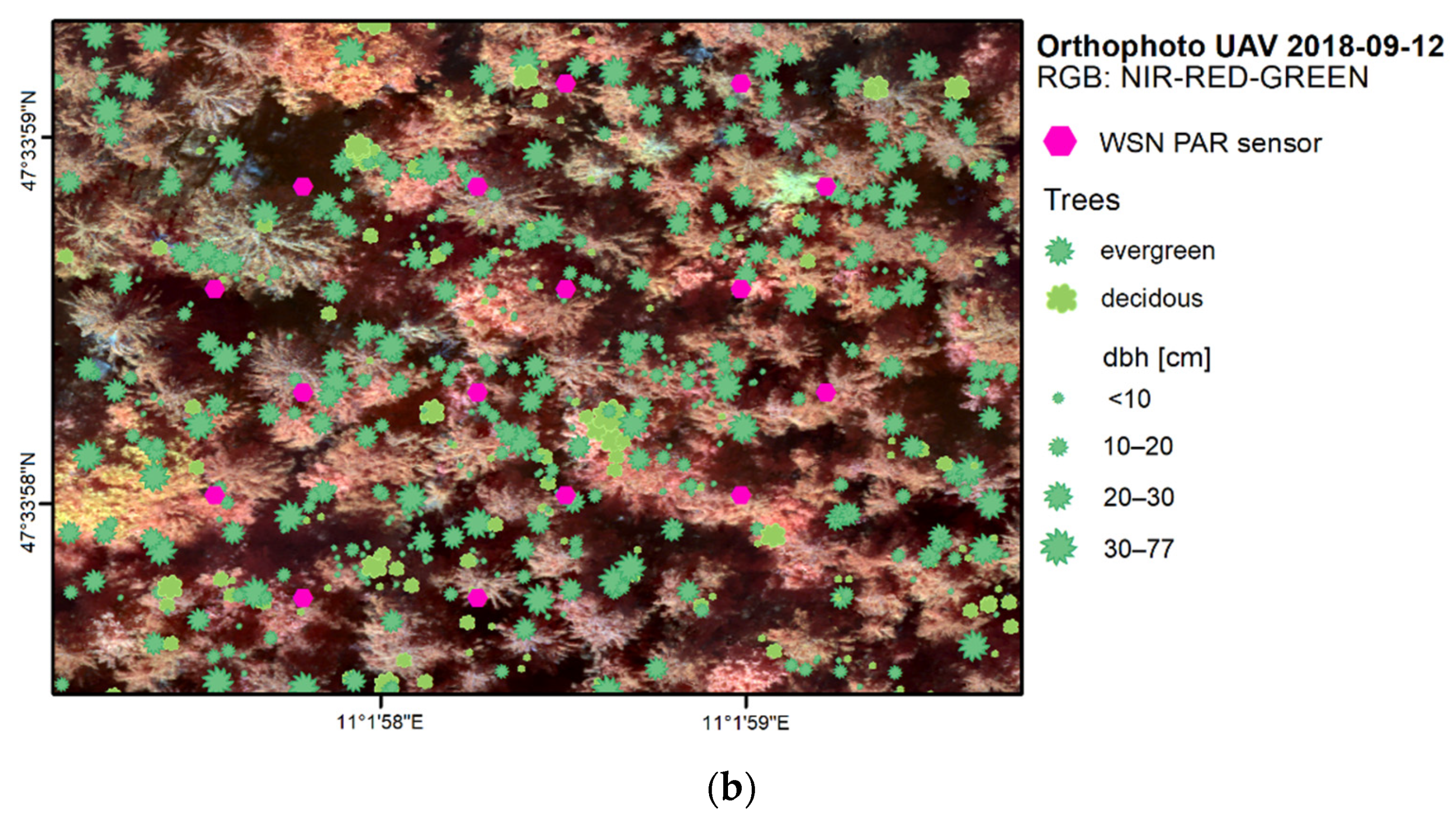
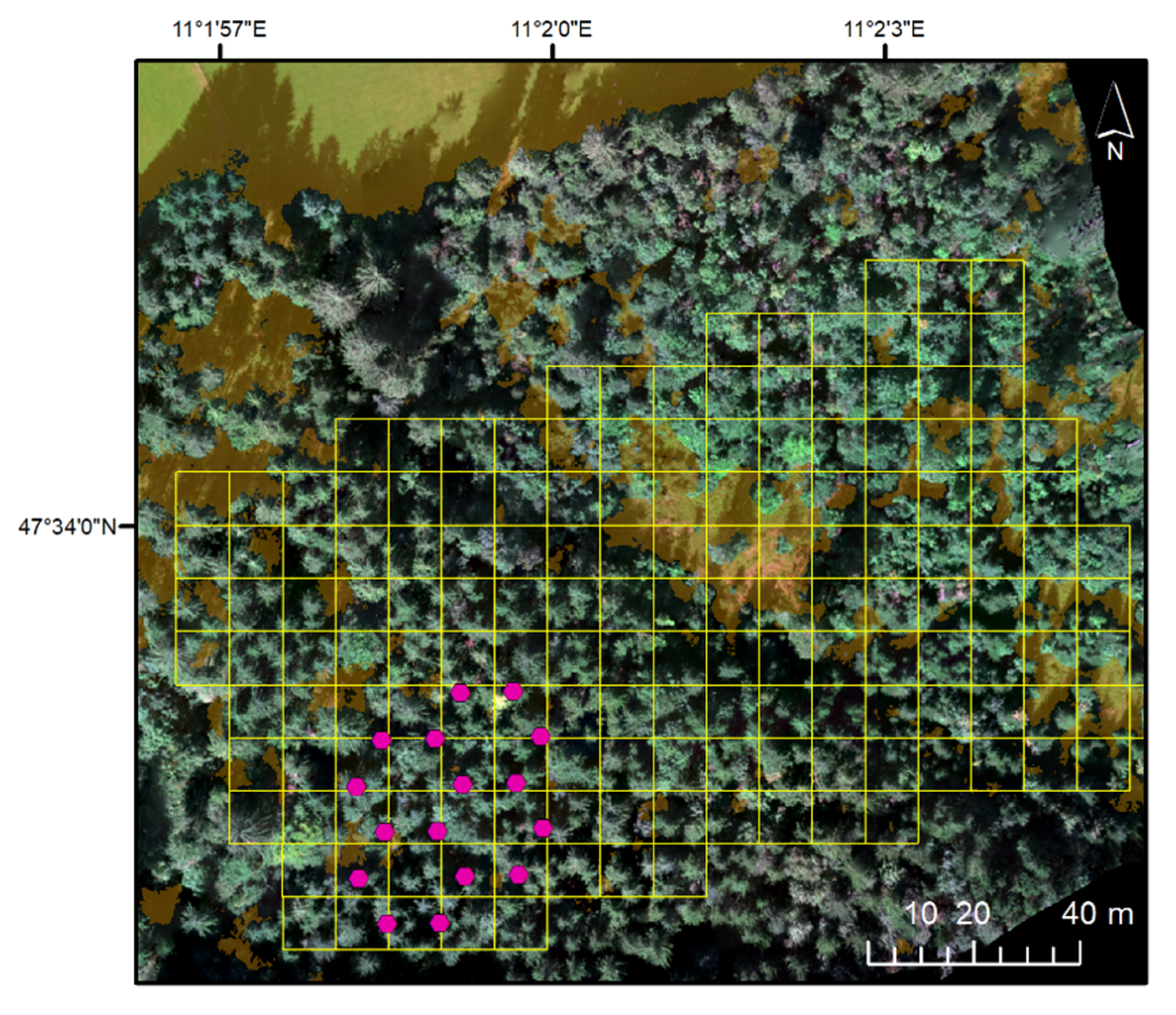
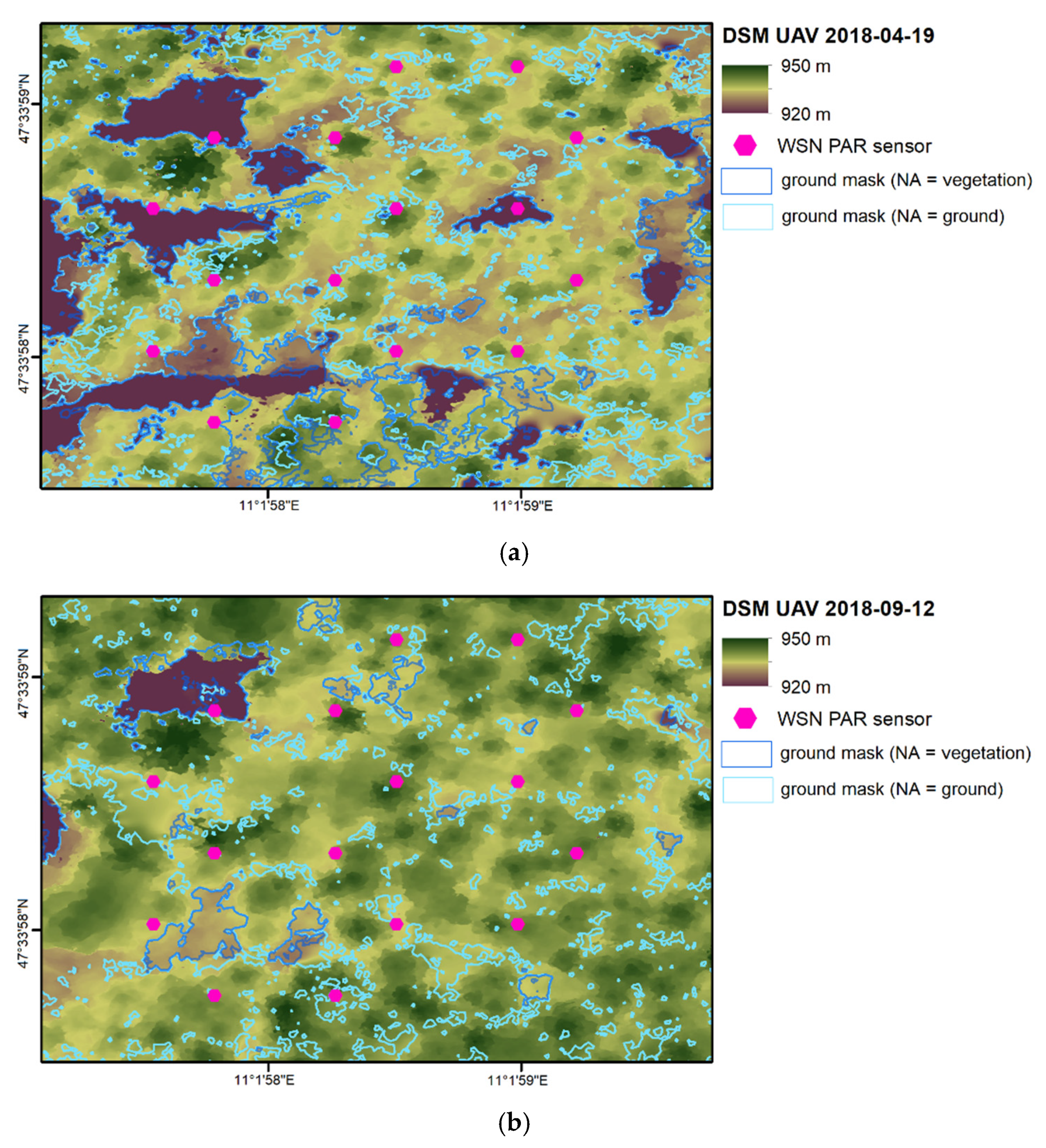
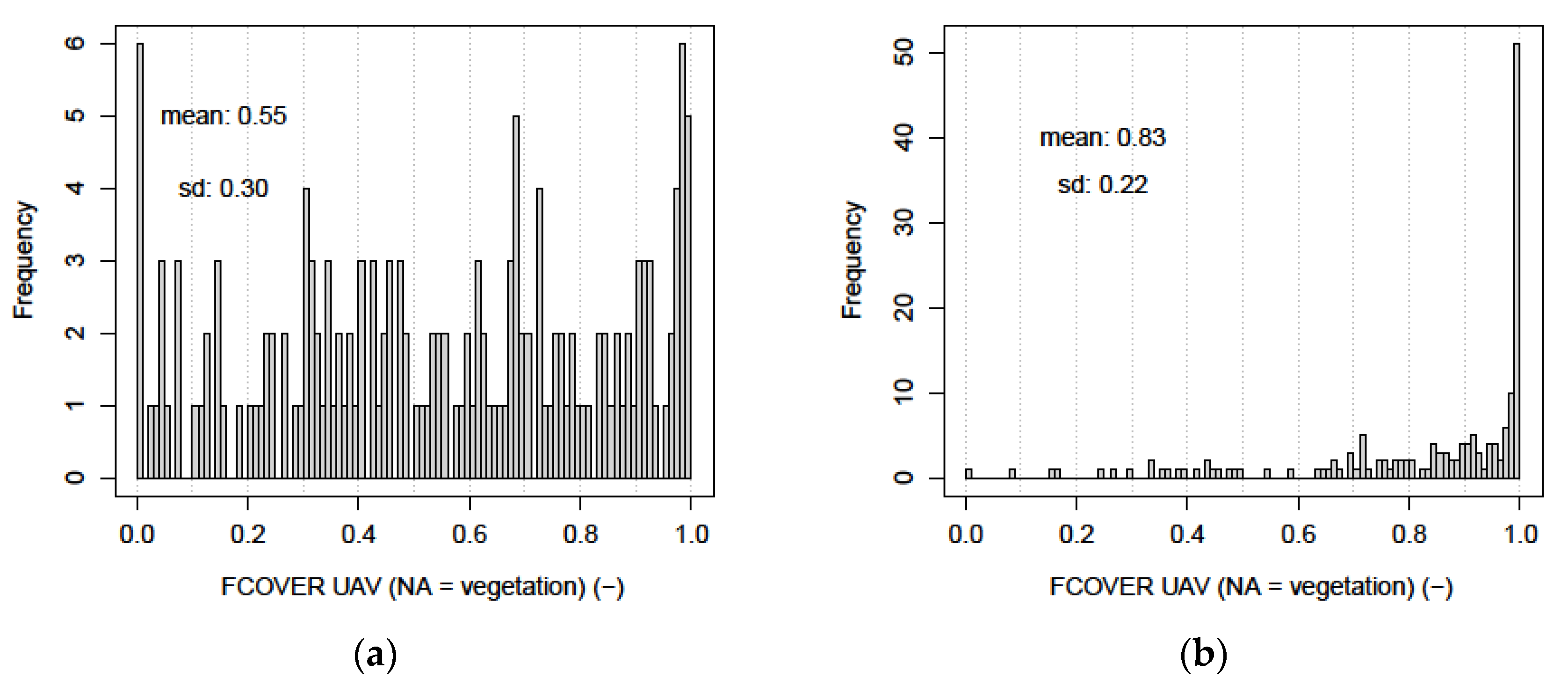
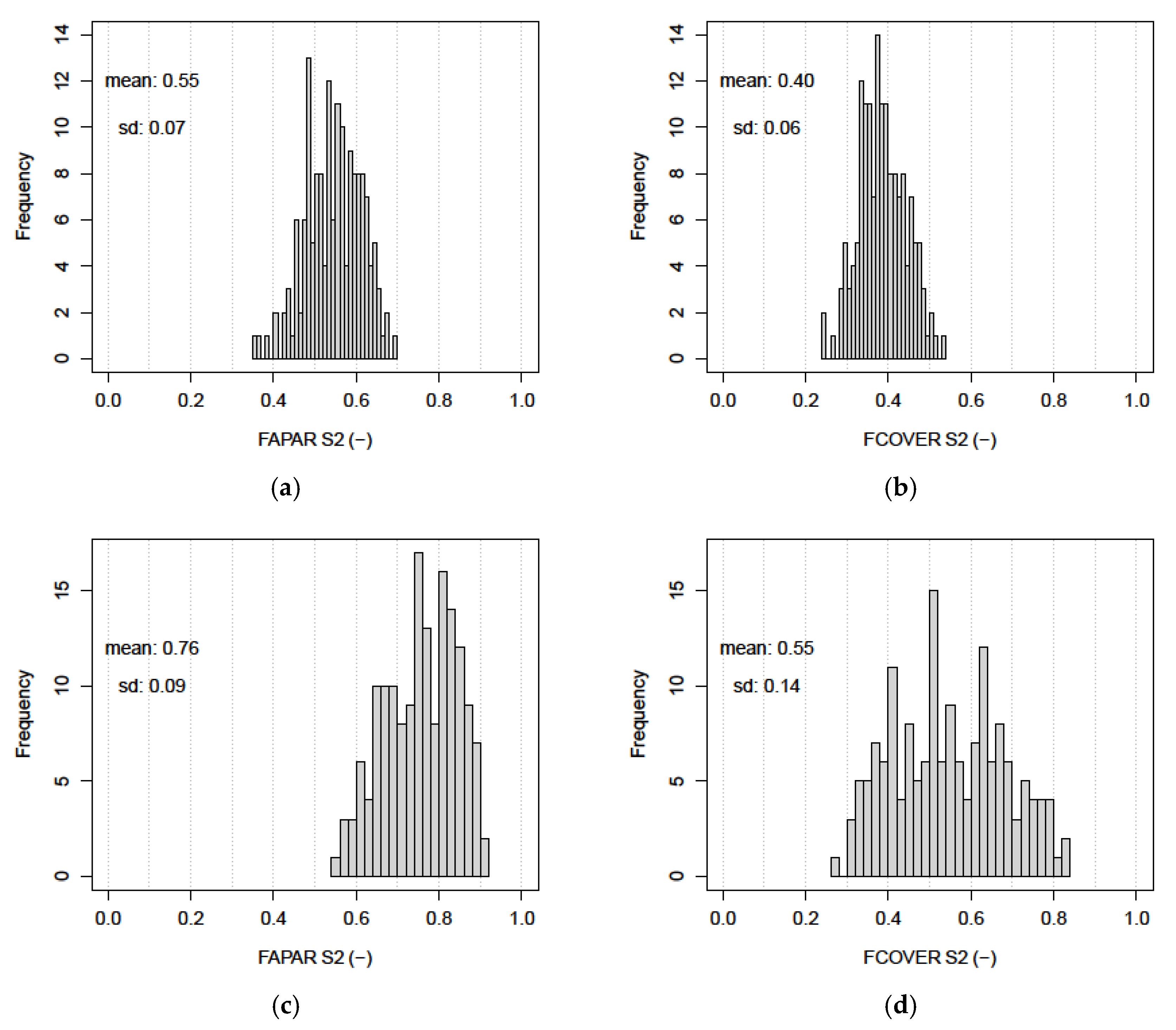
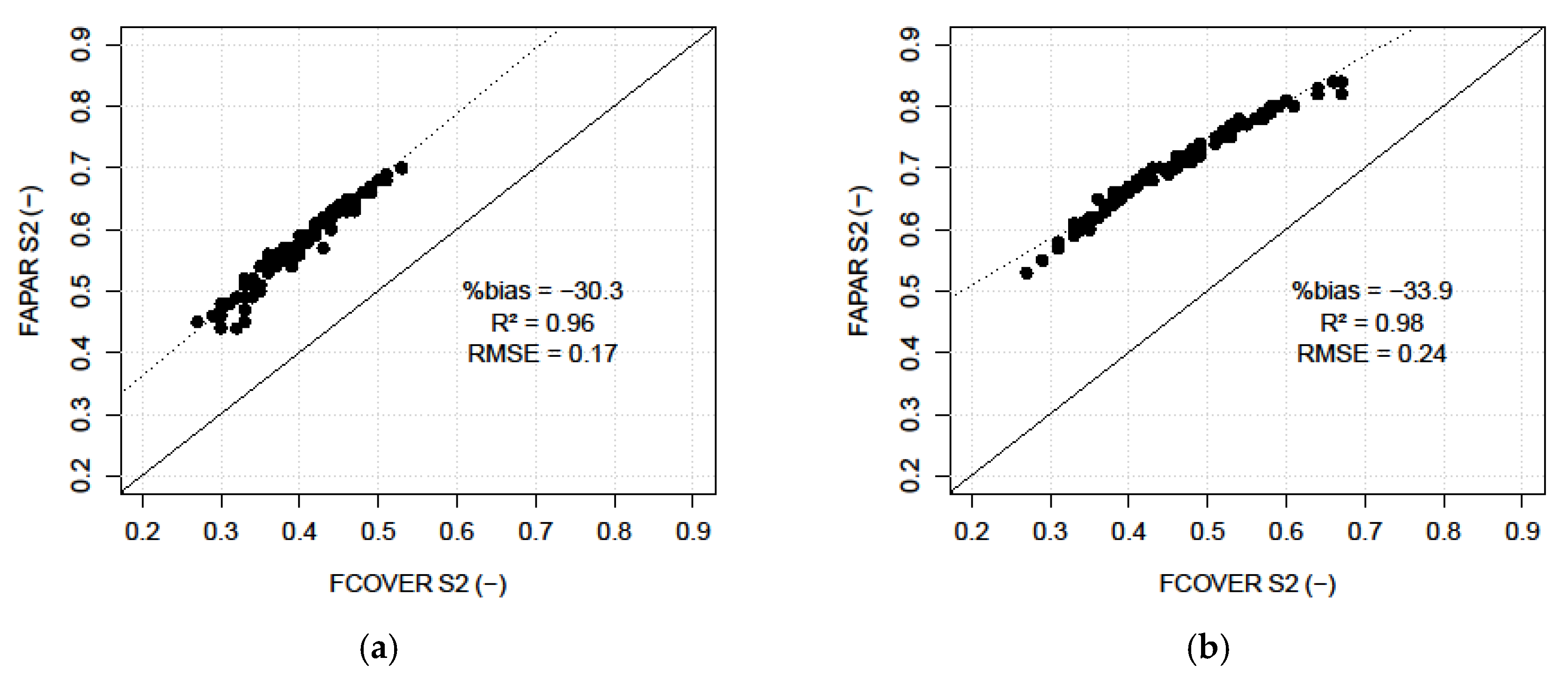

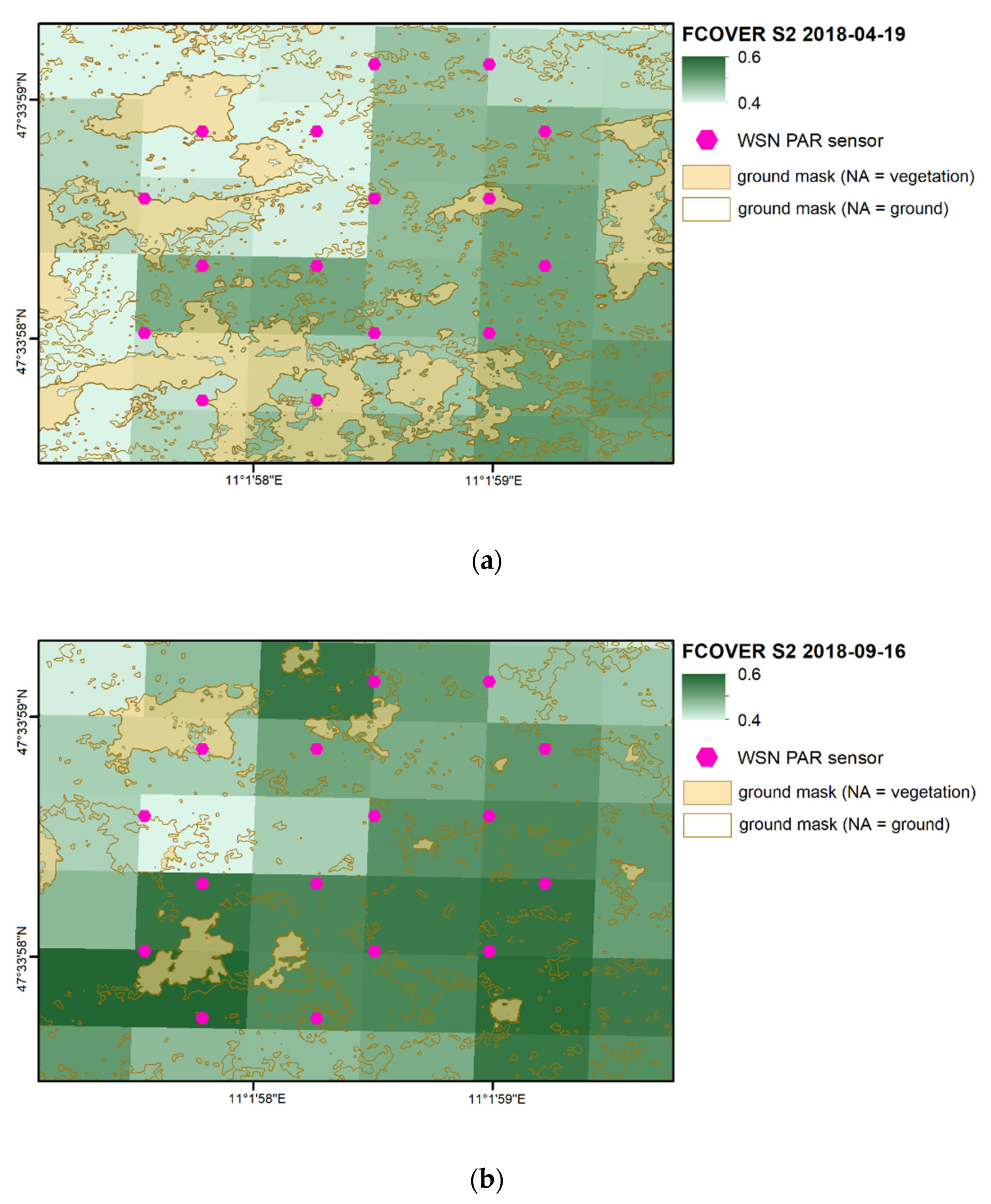
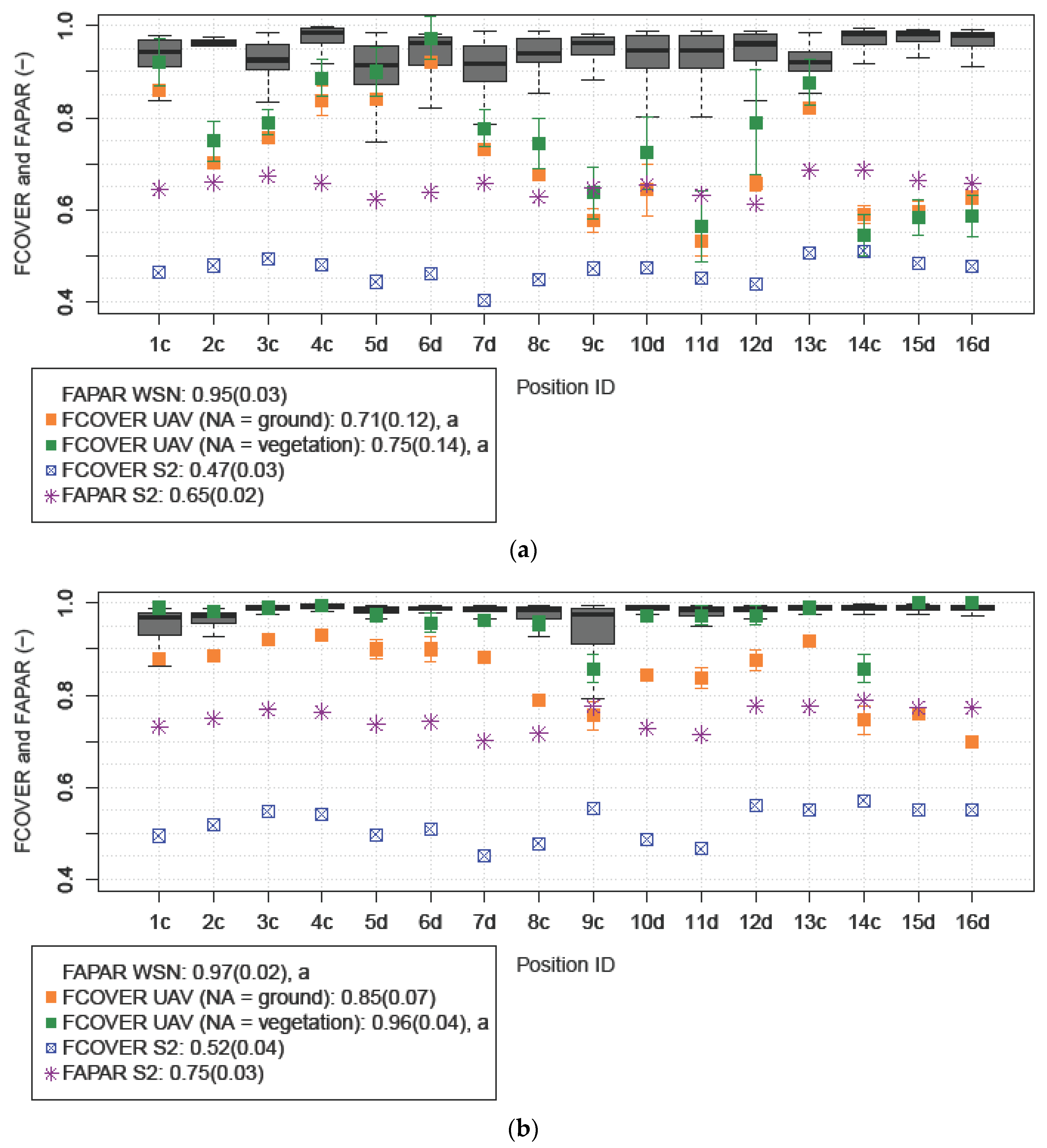

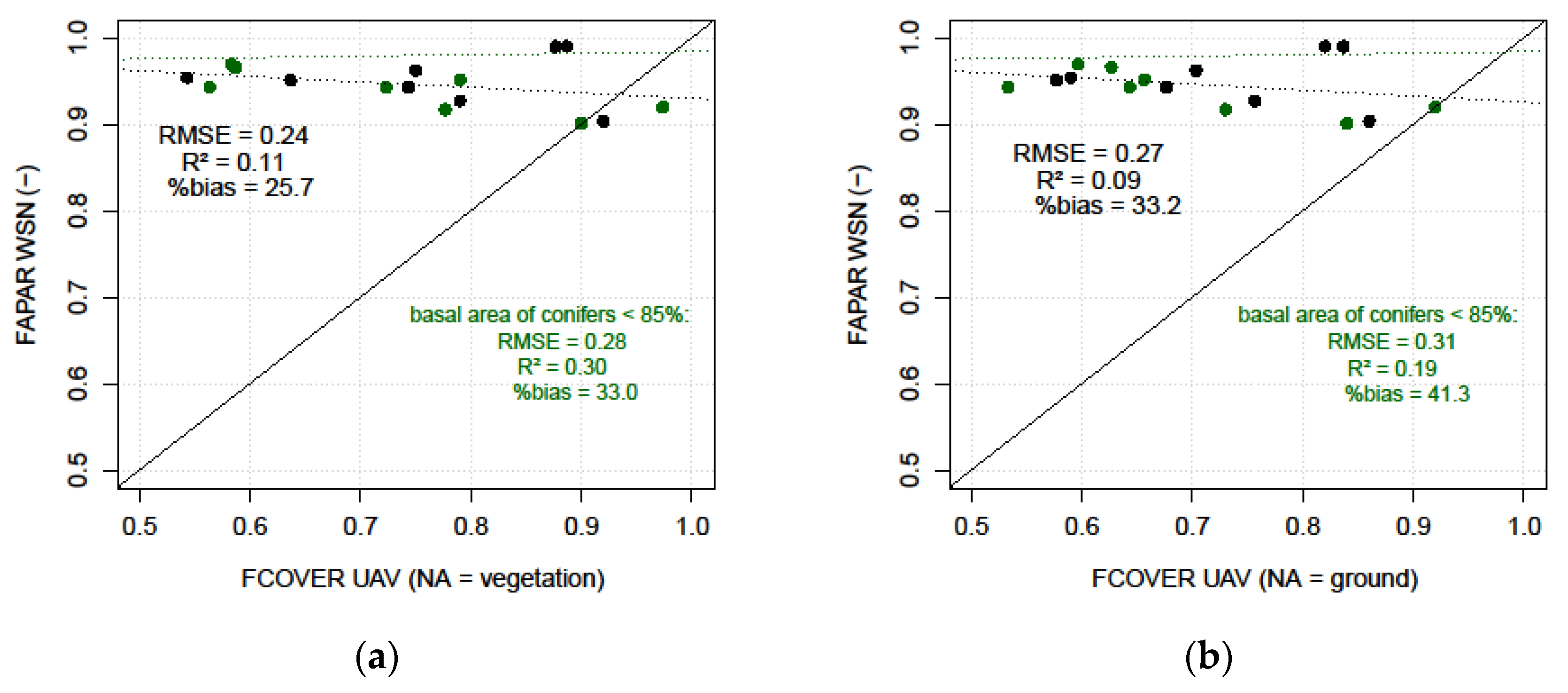
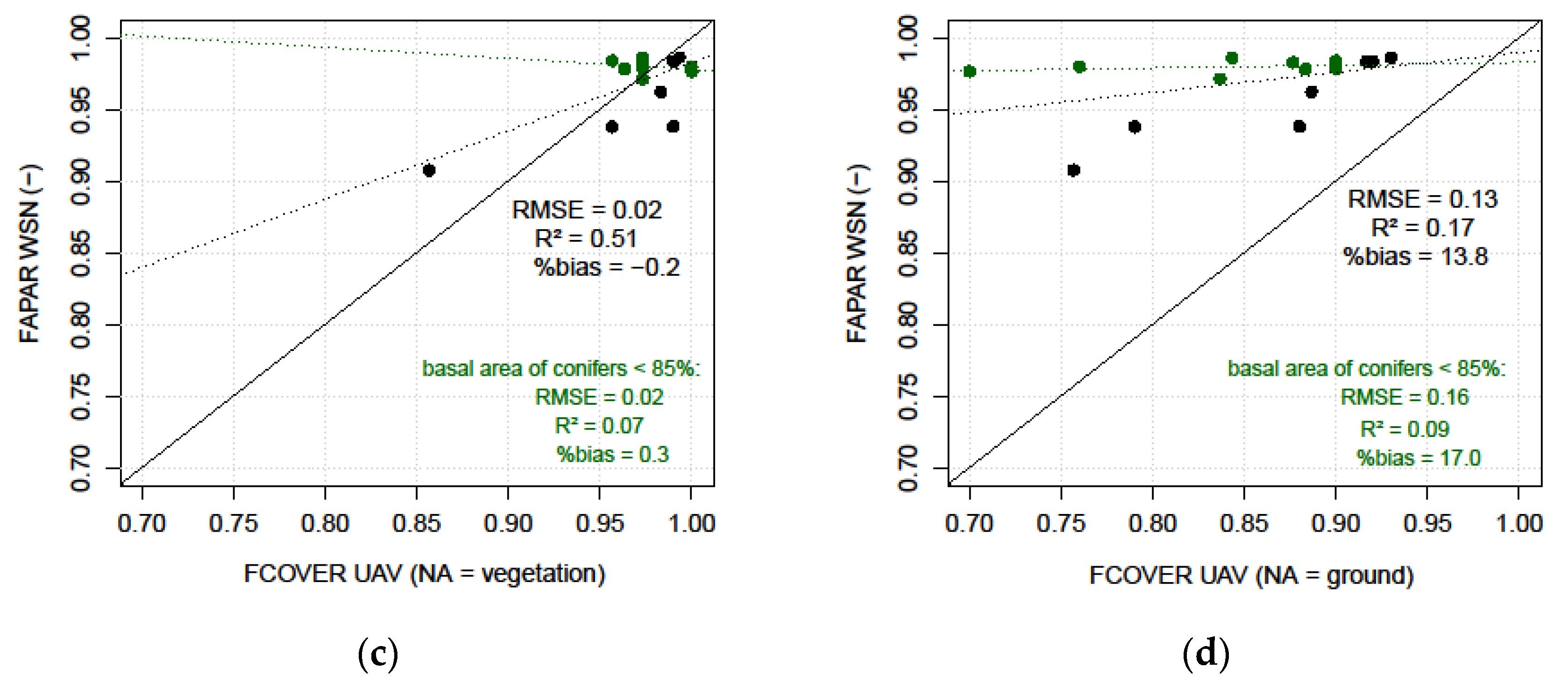
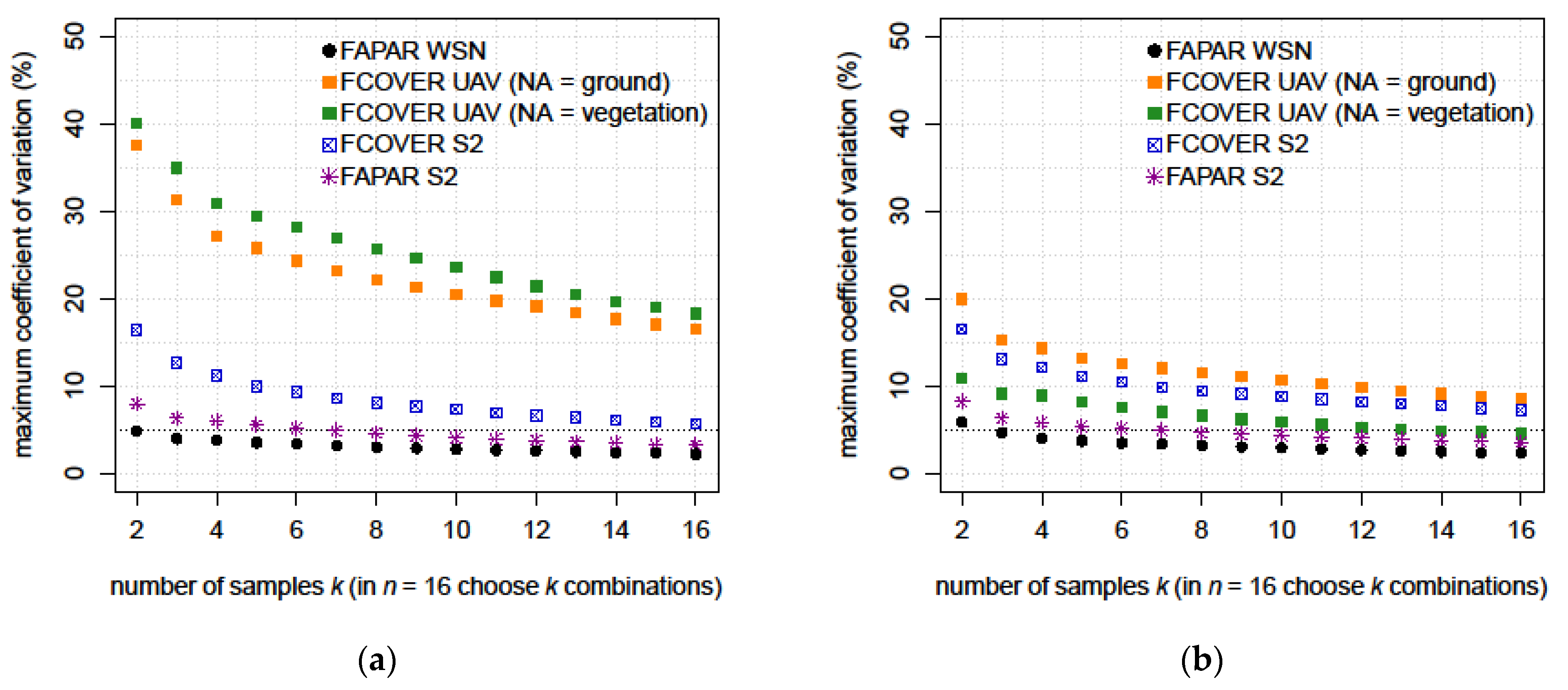

| Location ID | Basal Area (m² ha−1) | Basal Area of Conifers (%) | Species Composition |
|---|---|---|---|
| 2c | 0.7 | 94.3 | conifer-dominated |
| 3c | 0.5 | 96.7 | conifer-dominated |
| 4c | 0.4 | 95.5 | conifer-dominated |
| 5d | 0.5 | 79.2 | mixed |
| 6d | 0.4 | 65.9 | mixed |
| 7d | 0.5 | 82.1 | mixed |
| 8c | 0.4 | 93.1 | conifer-dominated |
| 9c | 0.5 | 91.9 | conifer-dominated |
| 10d | 0.6 | 82.0 | mixed |
| 11d | 0.7 | 81.4 | mixed |
| 12d | 0.4 | 77.7 | mixed |
| 13c | 0.4 | 95.1 | conifer-dominated |
| 14c | 0.5 | 92.2 | conifer-dominated |
| 15d | 0.5 | 79.4 | mixed |
| 16d | 0.5 | 81.7 | mixed |
| Defoliated Canopy | Foliated Canopy | |||
|---|---|---|---|---|
| NA = Ground | NA = Vegetation | NA = Ground | NA = Vegetation | |
| FCOVER-UAV | 0.20 | 0.64 | 0.63 | 0.94 |
| number of gaps | 515 | 129 | 414 | 27 |
| Gap size: mean ± sd (m2) | 4.3 ± 68.4 | 10.5 ± 85.3 | 2.5 ± 17.9 | 6.5 ± 16.9 |
| Ratio of small gaps (<5 m2) (%) | 97 | 91 | 95 | 81 |
| of which very small gaps (<1 m2) (%) | 92 | 93 | 90 | 68 |
Publisher’s Note: MDPI stays neutral with regard to jurisdictional claims in published maps and institutional affiliations. |
© 2022 by the authors. Licensee MDPI, Basel, Switzerland. This article is an open access article distributed under the terms and conditions of the Creative Commons Attribution (CC BY) license (https://creativecommons.org/licenses/by/4.0/).
Share and Cite
Putzenlechner, B.; Marzahn, P.; Koal, P.; Sánchez-Azofeifa, A. Fractional Vegetation Cover Derived from UAV and Sentinel-2 Imagery as a Proxy for In Situ FAPAR in a Dense Mixed-Coniferous Forest? Remote Sens. 2022, 14, 380. https://doi.org/10.3390/rs14020380
Putzenlechner B, Marzahn P, Koal P, Sánchez-Azofeifa A. Fractional Vegetation Cover Derived from UAV and Sentinel-2 Imagery as a Proxy for In Situ FAPAR in a Dense Mixed-Coniferous Forest? Remote Sensing. 2022; 14(2):380. https://doi.org/10.3390/rs14020380
Chicago/Turabian StylePutzenlechner, Birgitta, Philip Marzahn, Philipp Koal, and Arturo Sánchez-Azofeifa. 2022. "Fractional Vegetation Cover Derived from UAV and Sentinel-2 Imagery as a Proxy for In Situ FAPAR in a Dense Mixed-Coniferous Forest?" Remote Sensing 14, no. 2: 380. https://doi.org/10.3390/rs14020380
APA StylePutzenlechner, B., Marzahn, P., Koal, P., & Sánchez-Azofeifa, A. (2022). Fractional Vegetation Cover Derived from UAV and Sentinel-2 Imagery as a Proxy for In Situ FAPAR in a Dense Mixed-Coniferous Forest? Remote Sensing, 14(2), 380. https://doi.org/10.3390/rs14020380







